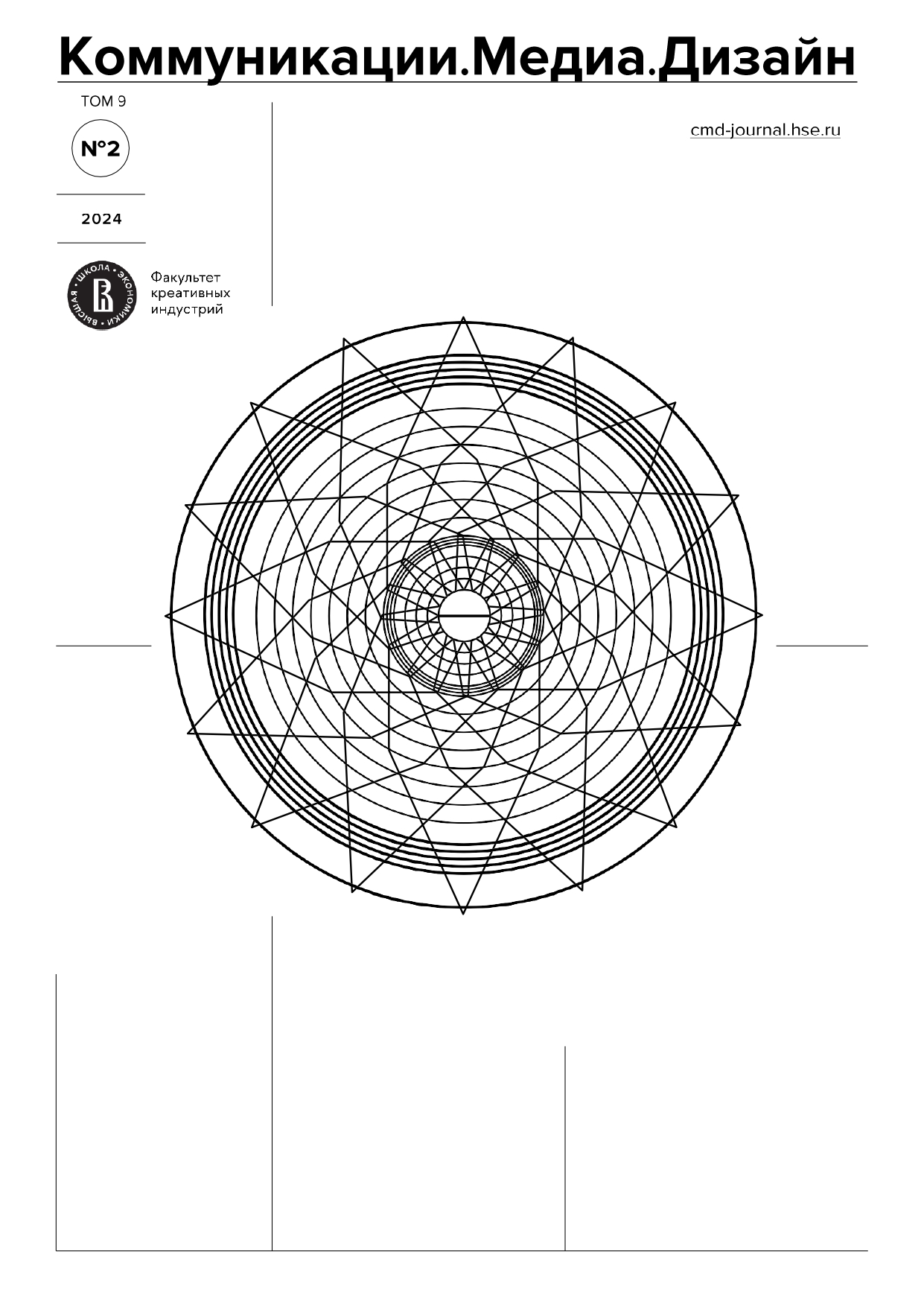Crisis Management Features in Government Owned News Agencies
Abstract
This article reviews the typologies of crisis phenomena in news agencies forced to work in conditions of a high level of complexity of the post-pandemic information environment. The author analyses the methodology of diagnostic activities used in them aimed at preventing numerous crisis phenomena, including monitoring of the external environment and system analysis of signals about possible changes in the state and competitive status of the news agency; audit of managerial and financial climate, accounting status, risk management and assessment of the current state, as well as forecasting possible states and determining scenarios for the future state of the news agency. The main attention is paid to the peculiarities of risk management methods in the activities of news agencies during the crisis, starting with the method of building a risk map and the method of integrative risk management and ending with the method of building an information risk management system. In the final section, based on surveys of expert managers, the authors evaluate the methods of anti-crisis management used in TASS and RIA Novosti, systematizing the data obtained from these news agencies on models and measures, conditions, and infrastructure, predicted risks of anti-crisis management.
Downloads
References
Азарская, М. А., и Поздеев, В. Л. (2019). Информационное обеспечение управления рисками экономической безопасности предприятия. Вестник Тюменского государственного университета, социально-экономические и правовые исследования, 5(3), 179–192.
Аньшин, В. М., и Ильина, О. Н. (2023). Управление проектами: фундаментальный курс. Издательский дом Высшей школы экономики. https://doi.org/10.17323/978-5-7598-2313-1
Арсенова, Е. В., Крюкова, О. Г., и Ряховская, А. Н. (2022). Зарубежная практика антикризисного управления: учебное пособие. Магистр.
Афанасьев, Ф. В. (2017). Управление проектами в стиле ДРАЙВ. Издательские решения.
Батина, И. Н. (2011). Использование системы сбалансированных показателей на российских предприятиях в современных условиях. Вестник Уральского института экономики, управления и права, (3), 27–35.
Волков, И. В. (2010). Карта рисков российского медиабизнеса. Российское предпринимательство, (7), 119–128.
Данильян, О. Г. (2020). Современный словарь по общественным наукам. НИЦ ИНФРА-М.
Дорофеев, А. А. (2009). Управление медиакомпанией: как обыграть кризис. Broadcasting. Телевидение и радиовещание, (4), 47–48.
Картвелишвили, В. М. (2017). Риск-менеджмент. Методы оценки риска. ФГБОУ ВО «РЭУ им. Г. В. Плеханова».
Катлип, Б., Сентер, А., и Брум, Г. (2016). Паблик рилейшенз. Теория и практика. Вильямс.
Кейнс, Дж. М. (2008). Общая теория занятости, процента и денег. Избранное. Эксмо.
Кузнецова, Е. И., и Русавская, А. В. (2022). Влияние цифровизации на изменение технологий и информационной модели современного медиабизнеса. Вестник Московского университета МВД России, (1), 376–380.
Ларионов, И. К., Брагин, Н. И., и Герасин, А. Н. (2022). Антикризисное управление: учебник. 4-е издание. Дашков и Ко.
Меньшиков, А. А. (2013). Связи с общественностью в кризисных ситуациях. КнАГТУ.
Полуэхтова, И. А. (2012). Социология массовых коммуникаций. Издательство Московского гуманитарного университета.
Самуэльсон, Пол Э., и Нордхаус, Вильям Д. (2009). Макроэкономика. Вильямс.
Скобелева, И. П., и Санжиева, Т. В. (2014). Модель интеграции риск-менеджмента в систему управления компанией на основе концепции BSC. Современные технологии управления, (5), 1–12.
Фейлинг, Т. Б. (2016). Антикризисное управление. РГГМУ.
Шкурко, В. Е. (2014). Управление рисками проектов. Издательство Уральского университета.
Black, S. (2013). The Practice of Public Relations. Routledge. https://doi.org/10.4324/9780080938325
Digitales Wörterbuch der deutschen Sprache. (2023, August 1). Krisis. https://www.dwds.de/wb/Krisis
Fink, C. (1998). Strategic Newspaper Management. Southern Illinois University Press Carbondale and Edwardsville.
Hallin, D. C., & Mancini, P. (2004). Comparing media systems: three models of media and politics. Cambridge University Press. https://doi.org/10.1017/cbo9780511790867
Huber, C., Higgins, D., & Lady, F. (2017). Glossary of Business Continuity Terms. Disaster Recovery Journal, (4), 19–20.
Lerbinger, O. (2012). The crisis manager: facing disasters, conflicts, and failures. Routledge Communication Series. https://doi.org/10.4324/9780203222133
Seitel, F. P. (1984). The practice of public relations. Charles E. Merrill Publishing Co. https://doi.org/10.1080/00913367.1984.10672893
Wu, D., & Ng, P. (2011). Becoming Global, Remaining Local: The Discourses of International News Reporting by CCTV-4 and Phoenix TV Hong Kong. Critical Arts, 25, 73–87. https://doi.org/10.1080/02560046.2011.552211

